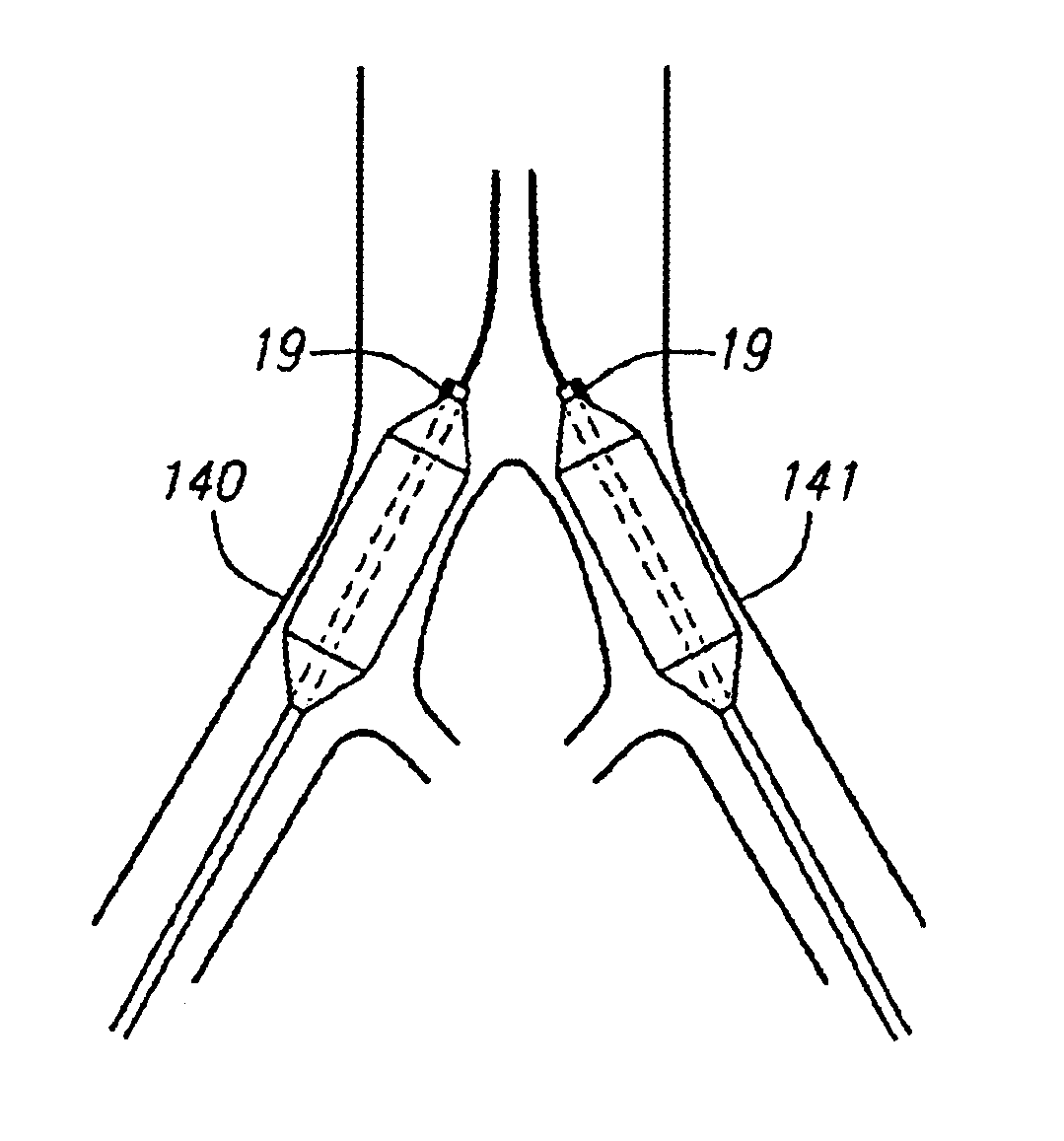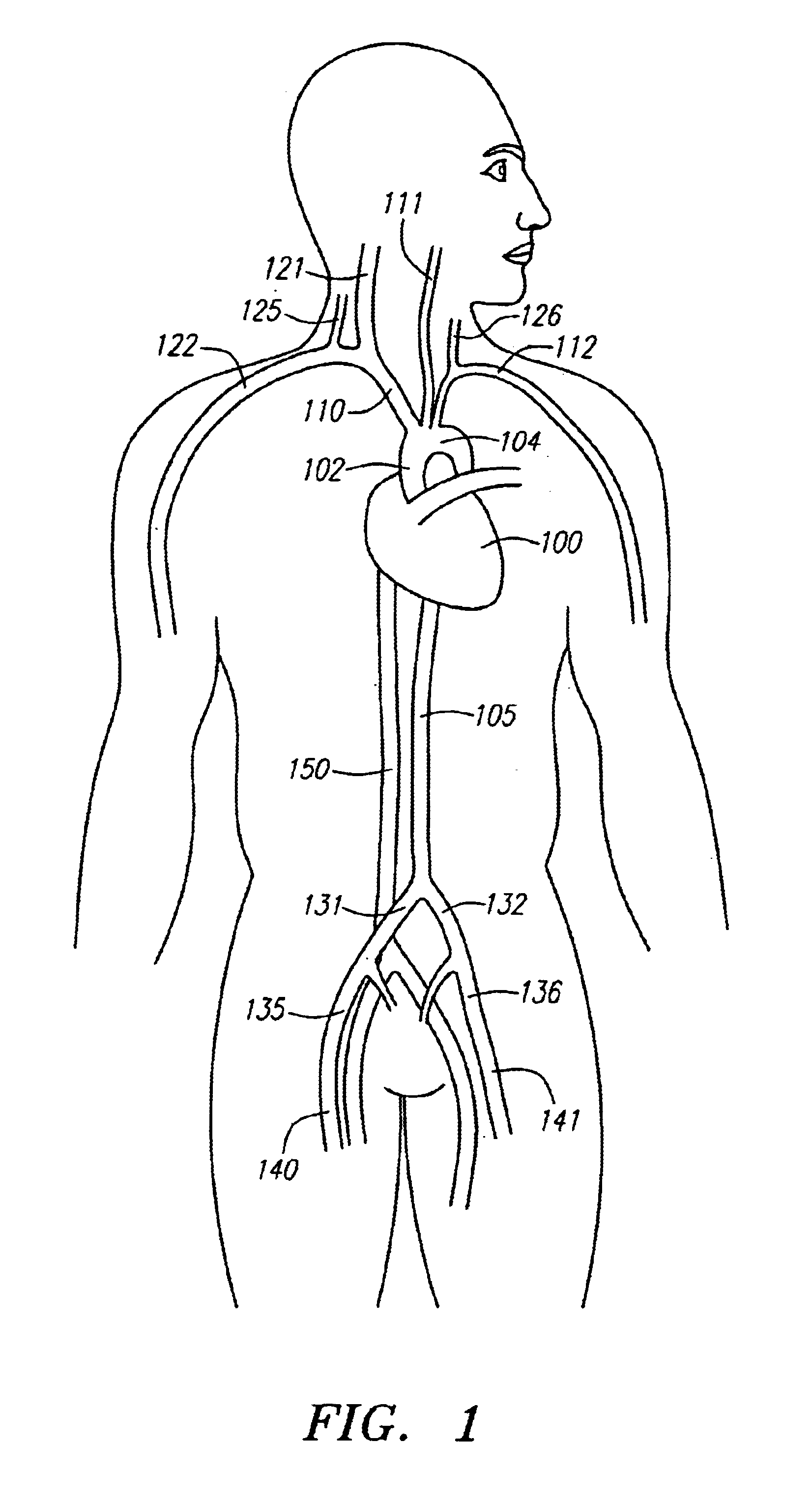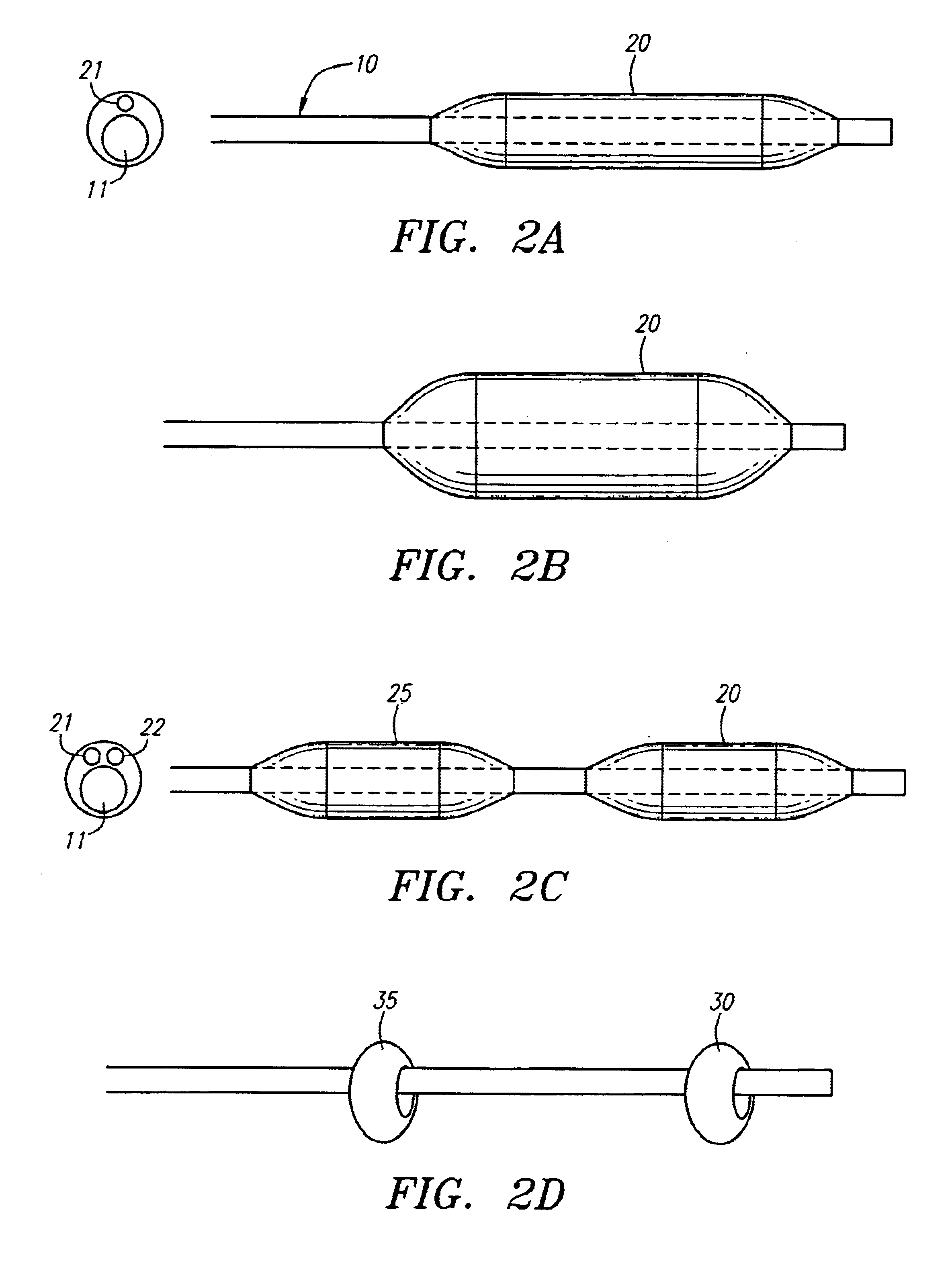Devices and methods for cerebral perfusion augmentation
a technology of perfusion augmentation and perfusion valve, which is applied in the field of cerebral perfusion augmentation, can solve the problems of reduced oxygen and nutrients in tissues, reduced cerebral ischemia treatment window, so as to prolong the therapeutic window in global or focal ischemia, prevent cerebral ischemia, and maintain cerebral perfusion
- Summary
- Abstract
- Description
- Claims
- Application Information
AI Technical Summary
Benefits of technology
Problems solved by technology
Method used
Image
Examples
Embodiment Construction
The devices and methods disclosed herein are to be used in treating patients suffering from global cerebral ischemia due to systemic circulatory failure, and focal cerebral ischemia due to thromboembolic occlusion or vasospasm of the cerebral vasculature. However, it will be understood that the devices and methods can be used in other medical conditions.
Systemic circulation relevant to the methods of the present invention is shown in FIG. 1. During systole, oxygenated blood leaving heart 100 enters the aorta, which includes ascending aorta 102, aortic arch 104, and descending aorta 105. The aortic arch gives rise to brachiocephalic trunk 110, left common carotid artery 111, and left subclavian artery 112. The brachiocephalic trunk branches into right common carotid artery 121 and right subclavian artery 122. The right and left subclavian arteries, respectively, give rise to right vertebral artery 125 and left vertebral artery 126. Further distally, right and left subclavian arteries...
PUM
 Login to View More
Login to View More Abstract
Description
Claims
Application Information
 Login to View More
Login to View More - R&D
- Intellectual Property
- Life Sciences
- Materials
- Tech Scout
- Unparalleled Data Quality
- Higher Quality Content
- 60% Fewer Hallucinations
Browse by: Latest US Patents, China's latest patents, Technical Efficacy Thesaurus, Application Domain, Technology Topic, Popular Technical Reports.
© 2025 PatSnap. All rights reserved.Legal|Privacy policy|Modern Slavery Act Transparency Statement|Sitemap|About US| Contact US: help@patsnap.com



